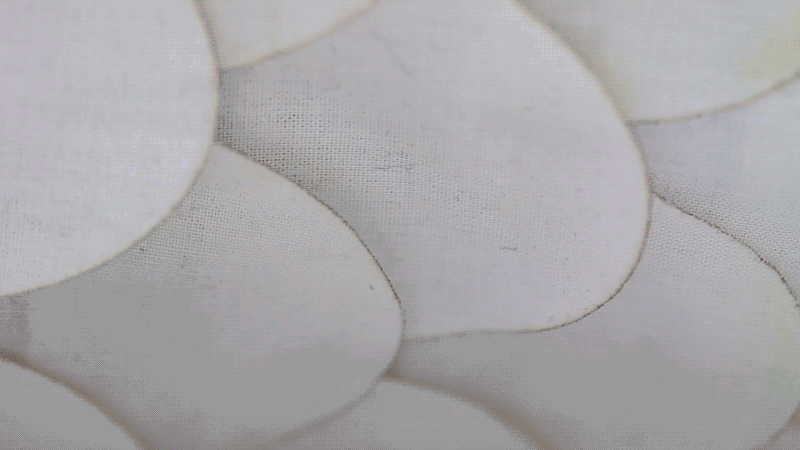
Endurans
Future textiles for radiation rich environments

Endurans
Bacterial material for harsh environments
2018-19
5 Weeks
Role: REsearch with SMEs, Synthesis and Concept Development,
Bacterial growth culture, prototyping

Endurans is an exploration in future textiles for workers in hazardous, radiation-rich environments. It integrates genetically modified radiation resistant bacteria within the layers of material. The bacteria detect the amount of radiation in the environment by expressing a colour reporter gene as a feedback mechanism to indicate the intensity of radiation around the body.

Context
Endurans was inspired by conversations with researchers at CERN to explore alternatives to visualise radiation levels they were exposed to in the Large Hadron Collider. They currently use radiation suits, and wearable dosimeters to measure the amount of radiation present in the environment, the efficacy of the suits are not yet established. In the future as well, whether in the International Space Station or life on Mars, we will need intuitive ways of adapting and protecting ourselves.
We looked to other organisms that have adapted to survive here and identified bacteria. Certain strains of bacteria have evolved over millions of years and can survive in space, in antarctic cold, and in radiation levels a thousand times stronger than we can. What if we could we create new relationships with natural organisms to explore and inhabit new environments?

Programming Biology
Bacterial cultures of M.luteus and D. Radiodurans are genetically modified with a reporter gene. These genes are attached to existing genes in the bacteria’s DNA, allowing it to express a colour based on the amount of radiation they absorb. The higher the amount of radiation the darker the colour gets. The reporter gene, I like to think, is like the if() statement in biology. The technique is used widely in biomedical engineering and microbiology to identify specific outcomes of experiments. The resulting cultures are then placed on nutrient layers along with structural and protective layers to complete the fabric.



The cost of production and application of bacteria-derived and other synthetic biological technology is slowly becoming cheaper and is being incorporated in a wider variety of products. In some cases this technology will become more cost effective as compared to the production of synthetic chemicals derived from energy intensive processes.

The Aegis
The material itself is inspired by the “Aegis” the mythological shield of Zeus and Athena. Unlike a normal shield, the Aegis was believed to be a second skin made out of the hyde of a Gorgon—A mythical creature with a scaly snake like appearance. Today the term is a metaphor for the protection or patronage of a powerful, knowledgeable source.
We explored different patterns by layering materials which would form a barrier between the person wearing the fabric, as well as act as an organic substrate for the bacteria to survive. The layers themselves would vary depending on the context of their applications


Team
Hyejin Lee (Service design)
Yibo Chen (Fashion)
Zhenzhu Wang (Fashion)
Lia Raquel Marques (Design Products)
Exhibitions & awards
Finalist—Health and Wellbeing
(CERN RCA Grand Challenge)
Royal College of Art
Work in Progress Show 2019, London
Making & Learning
This project was an exercise in interdisciplinarity, discovery through broad research and the development of compelling narratives through making and experimentation. We started out by simply looking closely at our skin, talking to experts on the skin microbiome and attending workshops in the dermatology at Imperial College. This quickly lead us to microbiology, and bio material engineering.
It was especially interesting to see how microbiologists are speaking about their subject like computer programmers, and biomaterial scientists talking about scaffoldings and structures like architects.






